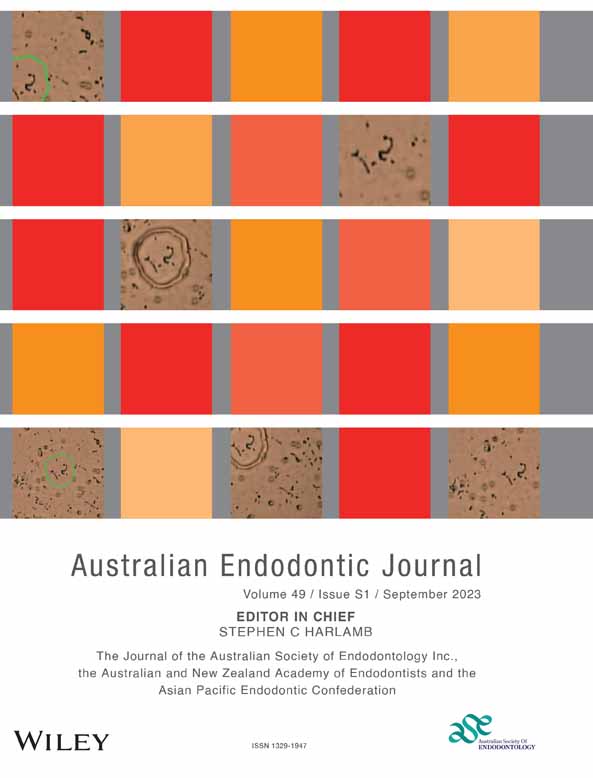Is XP-endo Finisher a better treatment option for its efficacy against intracanal bacteria for post-treatment apical periodontitis cases than EndoActivator?
Abstract
To investigate the efficacy of the supplementary use of a rotary agitation method [XP-endo Finisher (XPF)] and sonically-activated irrigation [EndoActivator (EA)], using droplet digital PCR (ddPCR) on reducing the bacterial load in previously root canal treated teeth with apical periodontitis. Twenty patients with post-treatment apical periodontitis were allocated into two groups according to the irrigation activation method used: XPF and EA group. Total bacterial loads, as well as the amount of Enterococcus faecalis (E. faecalis) were determined before (S1) and after (S2) chemomechanical preparation, and after final irrigation activation (S3) by means of ddPCR. The bacterial copy numbers were compared between groups using the Friedman test (Nonparametric Repeated Measures ANOVA). When the groups were examined in terms of gender, age, number of root canals, periapical index score, sterility control total bacteria (SCTB), S1- and S2-total bacteria copy number, it was found that there was no statistical difference between the XPF group and the EA group (p > 0.05). Subsequent activation (S3) resulted in a significant microbial reduction in both XPF and EA groups, both of which reduced significantly more bacteria than chemomechanical instrumentation (S2) (p < 0.0001). On the contrary, S3-total bacteria copy number of the EA group was lower than the XPF group (p < 0.0147). There was no statistical difference between the XPF group and the EA group in terms of E. faecalis copy number (p > 0.05). Although both the XPF and the EA optimised the antibacterial efficiency of chemomechanical preparation in previously root canal-treated teeth with apical periodontitis, a lower total bacterial copy number was achieved with the EA application than the XPF application.
CONFLICT OF INTEREST STATEMENT
The authors have stated explicitly that there are no conflicts of interest in connection with this article.




